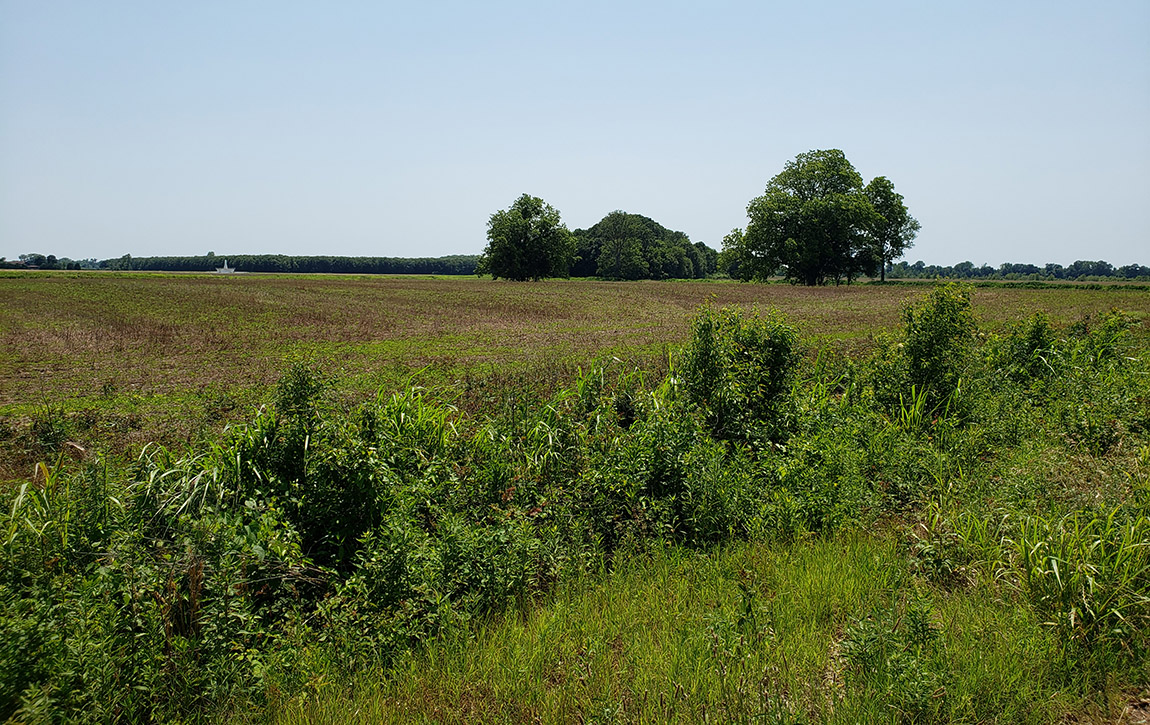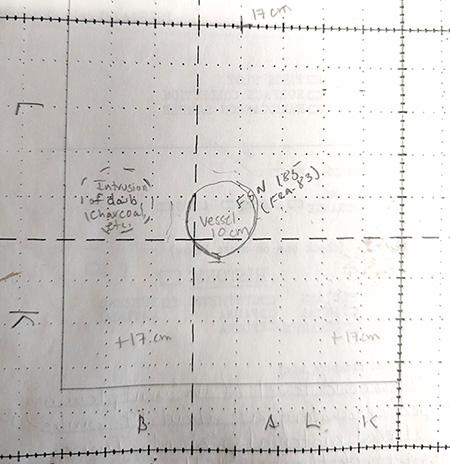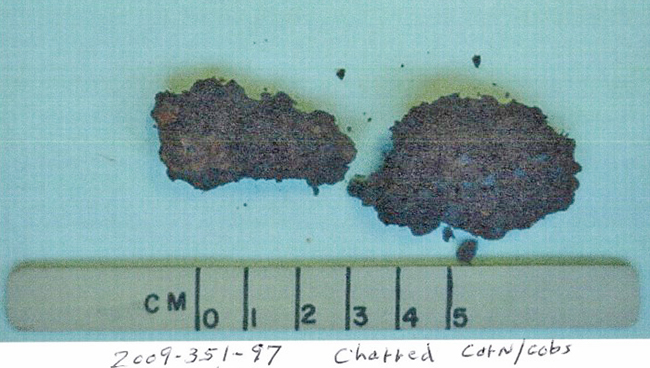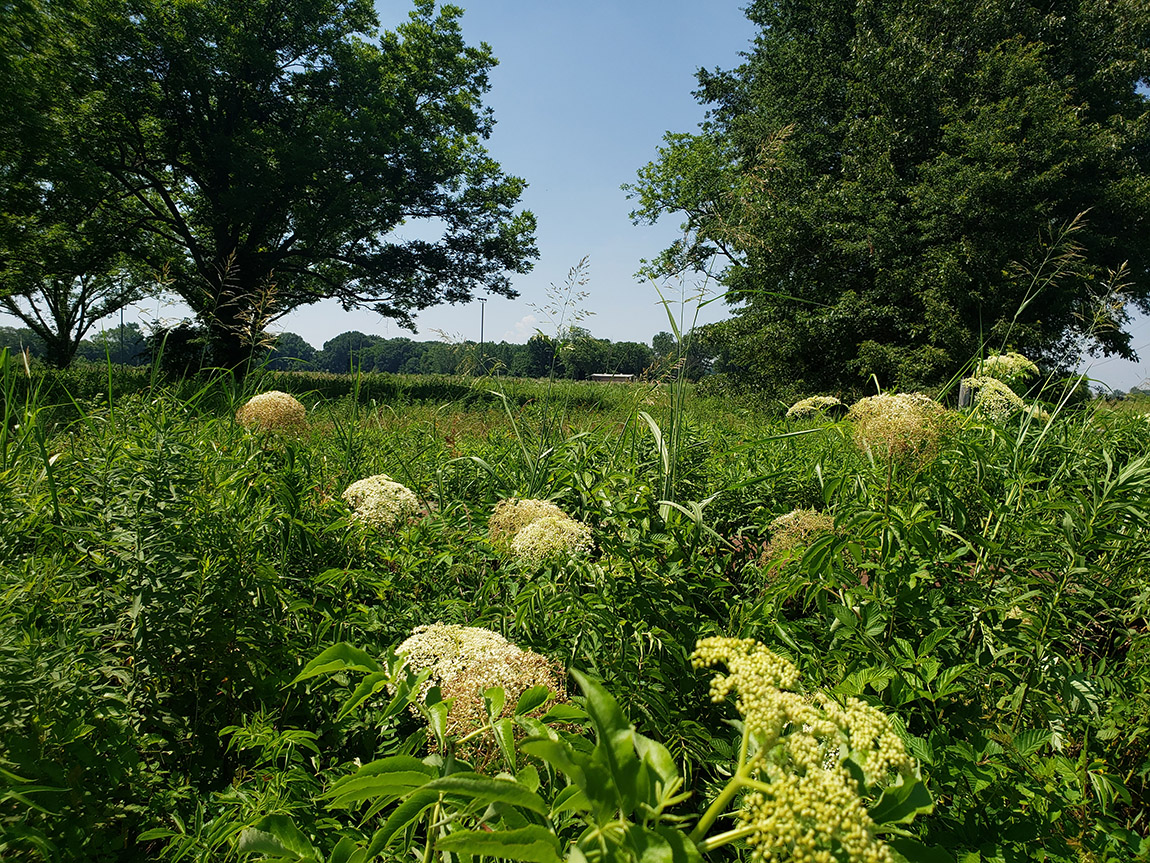
Noelle King
Feature of the Month - April 2023

Isgrig (3PU0015), a Late Mississippi period site located outside Little Rock, is considered part of the larger Menard Complex, which consists of Mississippian sites along the Lower Arkansas River between the Ouachita Mountains and the Mississippi River and occupied between the fifteenth and seventeenth centuries (Figure 1; House 1997; Jeter 2002). First formally recorded in 1966 as a large artifact scatter on agricultural land located close to the Arkansas River, initial excavations at Isgrig began in May 2008 and continued through May 2010, and were conducted by members of the Arkansas Archeological Survey, the Arkansas Archeological Society, and numerous volunteers and in consultation with the Quapaw. Excavations at Isgrig revealed numerous features, including over 30 postholes and large quantities of ceramic sherds.
As part of the excavation, 12 samples of paleoethnobotanical remains from the occupation period of the site were taken from nine features at Isgrig to be analyzed. Paleoethnobotanical samples are important in archeology as they can help answer questions about how different cultural groups were living, the materials they were using, and the foods they were eating. This information is especially useful for areas like the Menard Complex, which are still not fully understood, especially outside ceramic assemblages. One of the sources of these plant remains at Isgrig was Feature 83, which contained a vessel and charred seeds (Figure 2).

The top of the vessel was exposed during excavations at 10 cm below surface. The vessel was left on a pedestal as the excavation continued in the rest of the unit. Most of the unit was undisturbed A-horizon at this level, but it appeared that the vessel itself was buried in a small hole, not much bigger than the vessel itself, that intruded into this A-horizon. Cultural material and charred seeds were found scattered around the vessel, within a few centimeters, and in the small hole from which the vessel was recovered. The proximity of the charred seeds and their location within the small hole suggests that they are directly related to the pot and were buried at the same time. A possible posthole was also found just west of the vessel and charred seeds, containing charcoal and small bits of daub (Figure 3).
The analysis of botanical remains from Isgrig, including the seeds found in Feature 83, provide some insight into possible eating patterns and agricultural practices in the Lower Arkansas River Valley. Cupules, kernels, and cob fragments were recovered from every sample analyzed, with maize cupules the most frequent. Cupules “are composed of fairly dense tissue and are often charred as a result of burning dried cobs for fuel… cupules tend to preserve particularly well and are well represented in archaeological collections. In addition, they are the waste products, not the focus, of human consumption and are more likely to be found in occupation debris” (Turkon 2006). Mast resources also make up a large component of the botanicals from Isgrig, with both thick and thin shell hickory, acorns, walnut shell fragments, and possibly pecan shell fragments. While weed seeds were found in the collection, there was a noticeable lack of strong evidence for small seed crops such as chenopods or amaranth. There was also evidence for the relatively frequent consumption of grapes, with grape seeds or seed coat fragments found in nearly half the samples (Figure 4).

What does the paleoethnobotanical sample from Isgrig say about how people were eating and living? The hefty distribution of maize indicates that there was a strong agricultural practice in the area focused on maize growing and production, which is supported by current understandings of food production in the Late Mississippi period. The inclusion of mast resources means that there was possibly some foraging activity still happening in this period, and that nuts were a recognizable piece of the diet as Isgrig. Finally, the inclusion of grapes could indicate either foraging behavior or an expansion of maize-focused agriculture. The paleoethnobotanical assemblage from Isgrig indicates that the populace there relied on a diet of domesticated plants like maize, as well as plants that could be foraged or were undomesticated. It is through botanical samples from sites like Isgrig that archeologists can obtain more information about foodways and agricultural practices during a particular period, or over a longer span of time (Figure 5).

References:
House, John H.
1995 Noble Lake: A Protohistoric Archeological Site on the Lower Arkansas River. The Arkansas Archeologist 36: 47–97.
Jeter, Marvin D. Ethridge, Robbie, and Charles Hudson.
2002 From Prehistory through Protohistory to Ethnohistory in and near the Northern Lower Mississippi Valley. In Transformation of the Southeastern Indians, 1540-1760. University Press of Mississippi, Jackson.
Turkon, Paula.
2006 Morphological Variation of Maize Cupules and Access to High Quality Maize in the Prehispanic Malpaso Valley, Zacatecas, Mexico. Journal of Ethnobiology 26(1): 139-164.
Feature of the Month Series
Archeological features are elements or structures that are nonportable or cannot be easily removed from a site (such as a wall or a post hole). Archeologists document archeological features extensively in the field to record what will otherwise be destroyed in the process of excavation. The records of these features are often all that is left at the end of an excavation. Excellent record keeping is necessary for these features to provide insight into the archeological record and site formation.
In this series, we present interesting and important archeological features that have helped archeologists to better or more fully understand the sites on which they were working. New features will be added monthly. Find the list of features here.
